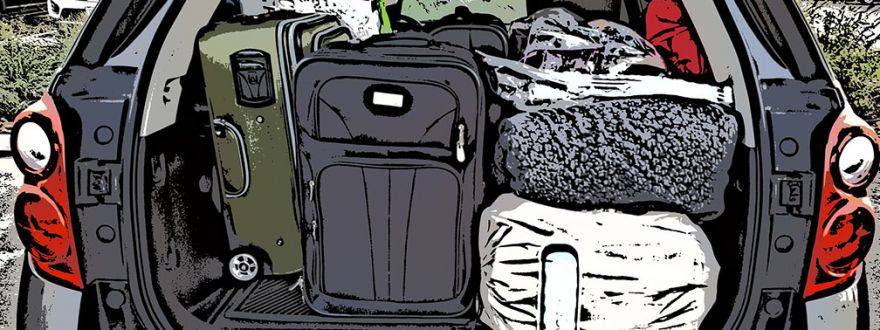
It was October 9, 2017 in Santa Rosa, California. While I slept, 5% of the City’s homes and over a hundred thousand acres of forest had burned. We were two miles from the burn zone and a mile from the evacuation zone.
Fires were still raging, and it was maddeningly difficult to determine where the fires were and what direction they were burning. We had to pack to be ready to evacuate. I do emergency preparedness for a living. I have enough food, water, and supplies to hunker down with no utilities for two weeks. That’s what you need to be ready for an earthquake.
But it wasn’t an earthquake this time. I had never really thought through the get-out-of-Dodge-now scenario. It was a failure of imagination: it had never occurred to me that a fire could grow so large as to chase me out of a home in the center of a developed urban area.
 All that morning I felt like I was mentally moving through mud.
All that morning I felt like I was mentally moving through mud.
I couldn’t think straight or hold a thought. Every time my wife suggested something we should pack or take care of, I forgot what I was doing. The moment when your life may be in danger is a really bad time to plan what to take in an evacuation.
As the fires burned on for three weeks, most people stayed at home to avoid the pervasive smoke. I took this time to create a list labeled “Do Things in This Order,” with a note at the top to leave immediately when conditions dictate. It goes from the most essential things to pack through the irreplaceables to the
good-to-haves. I printed and laminated the list.
Here’s a list you can use. It will help you organize what to pack according to how much time you have. Fill it out in advance so that, in the moment when you can’t think straight, you can just read it and see where the things you want to grab are in your house.
When an evacuation order is issued for your area, leave as soon as you possibly can. Evacuation routes can become congested. Many of those who did not survive the Paradise fire died in their cars in evacuation traffic jams. With a checklist you’ve thought through in advance, you’re much more likely to get out alive.
Guest blog by our local Partner, Cate Steane. Cate is the Founder of Make It Happen Preparedness Services, which helps businesses secure their future through emergency preparedness training and planning. Find out more at www.makeithappenps.com.
EVACUATION GRAB & GO LIST
If you have 3-5 Minutes
- Wallet or purse
- Car, house, RV keys
- Cell phone and chargers
- Medications
- Medical Devices – Cane, CPAP, oxygen, etc.
- Glasses
- Laptop and charger
- *External hard drive (or back up everything on the cloud)
- *Emergency Folder – passports, birth certificates, proof of residency (insurance cards, utility bill in your name with address)
- Shoes & Jacket
- *72-Hour Pack (https://www.ready.gov/build-a-kit)
- Pets
- *Pets’ 72-hour pack (https://bit.ly/2DBOhBG)
- *Go binder (one example: https://bit.ly/2Hi8KOV)
If you have 15 Minutes
- Photo containers
- Several changes of clothes
- Family photos
- Filled water bottles
- Sleeping bags and pads
- First aid kit
If you have 30 Minutes
- Journals
- Cooler with snacks
- *Battery- or crank-powered radio and extra batteries
- *Sanitation kit (https://bit.ly/2Q43scp , or purchase)
- Flashlights
- Tent
If you have 1 hour
- Air mattress
- Camp stove
- Shovel
- Fire extinguisher
*Prepare in advance
Header Image by Peggy Dyar via Pixabay





